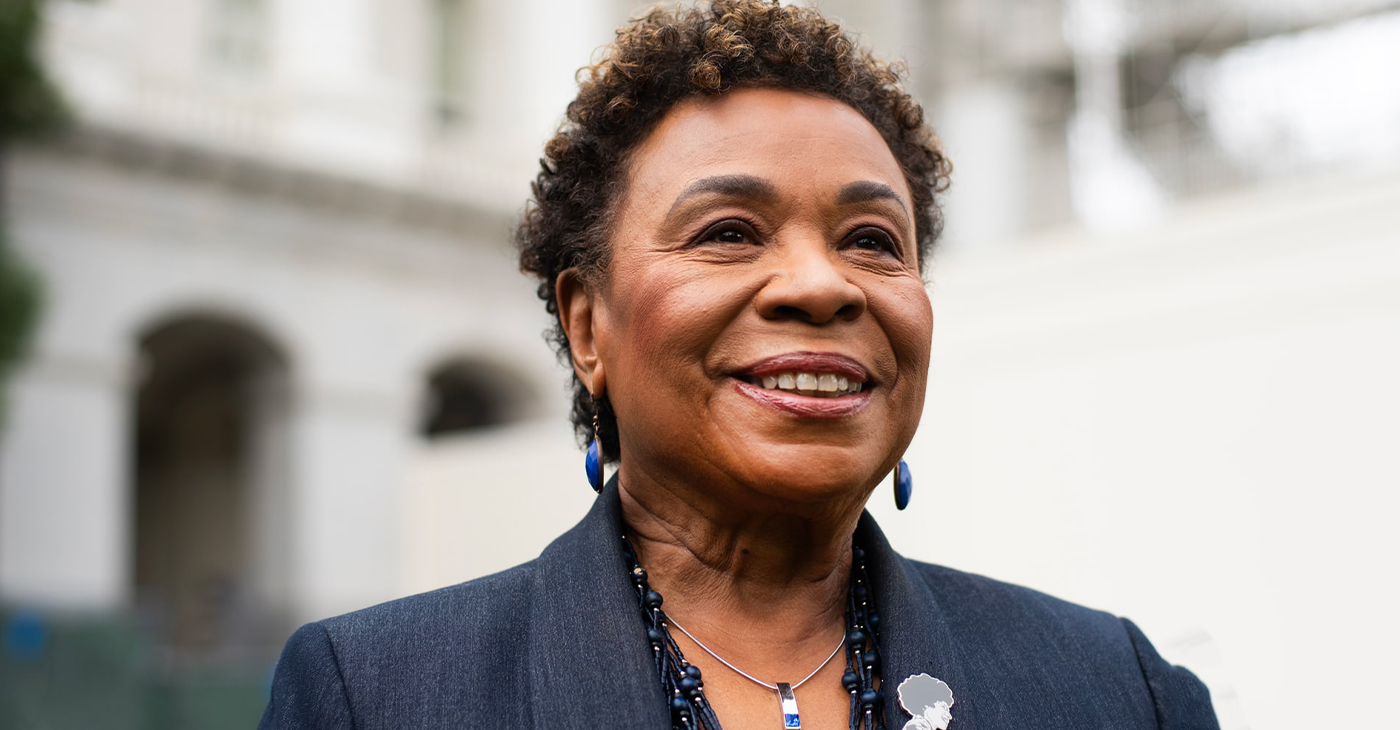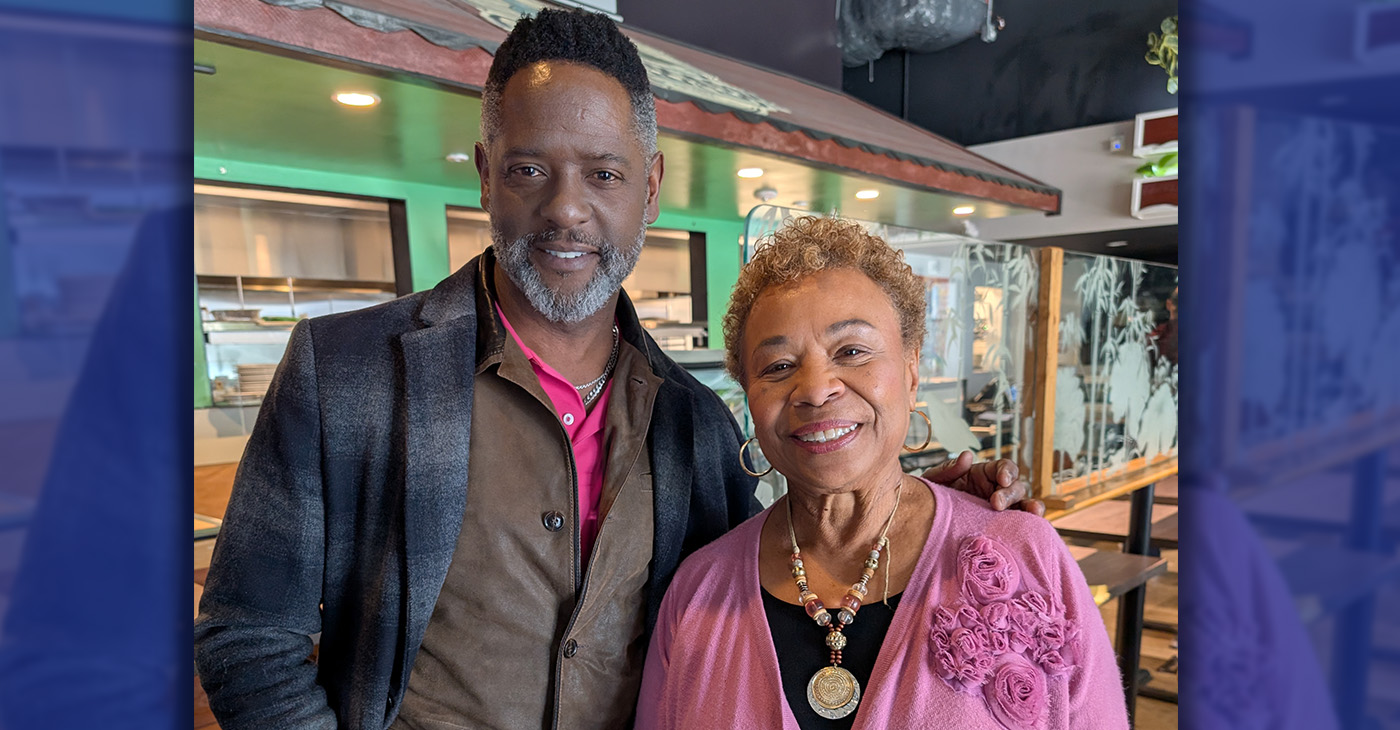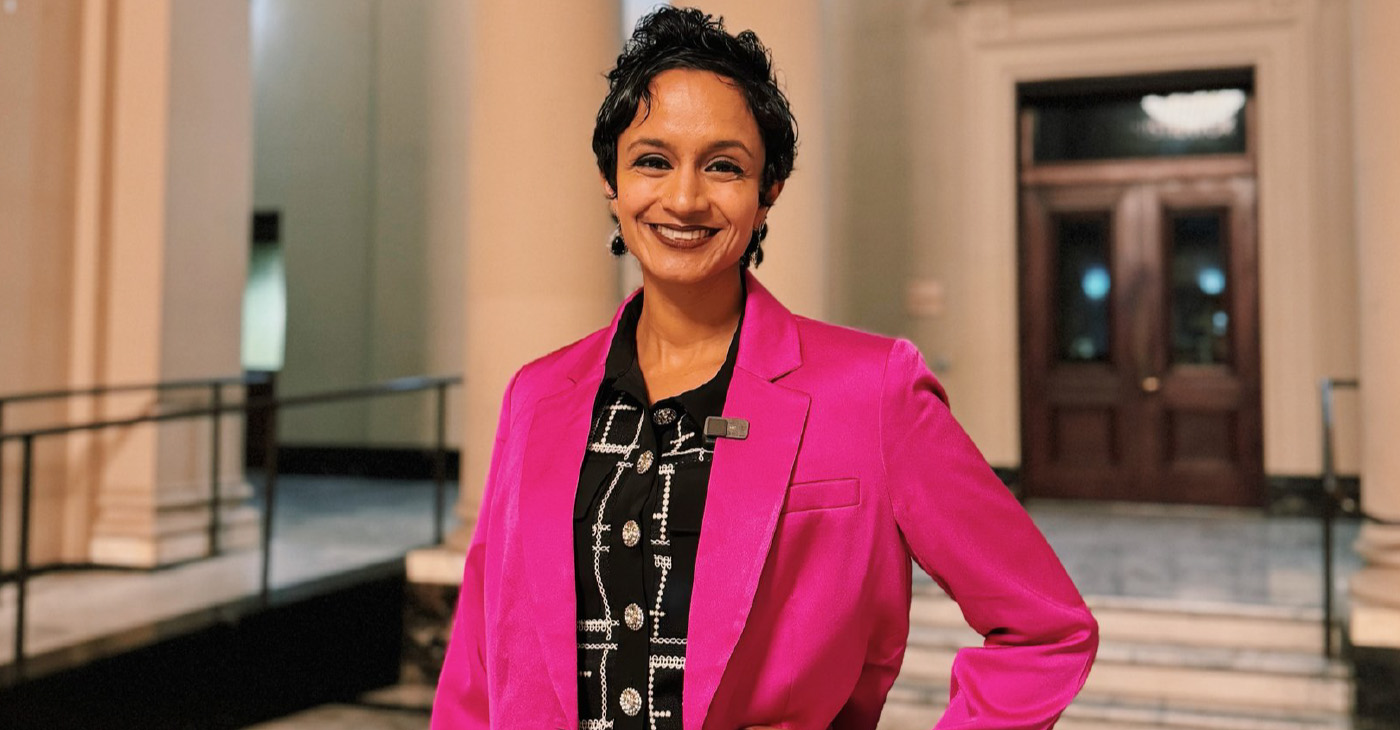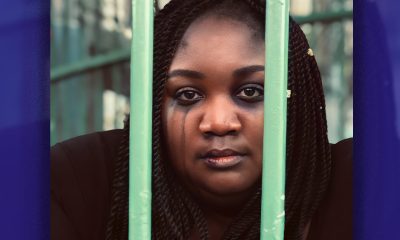Op-Ed
Child Watch: Girls in Justice
By Marian Wright Edelman
NNPA Columnist
I’m grateful for a powerful new book, Girls In Justice by artist Richard Ross, a follow up to his moving earlier Juvenile In Justice, which combines Ross’s photographs of girls in the juvenile justice system with interviews he gathered from more than 250 detention facilities across the United States. If a picture is worth a thousand words, the deeply disturbing photographs speak volumes. Ross uses the power of photography to make visible the hidden and harsh world of girls in detention. These heart wrenching images coupled with the girls’ ages and life stories should move us to confront the cruel and unjust juvenile justice system in our nation.
These girls are ours: our neighbors, our children’s classmates, our daughters and granddaughters, sisters, cousins, and nieces — and, for some young children, our mothers. Girls In Justice begs the questions: Why are so many girls, especially girls of color, confined in our nation’s detention facilities? And what are we as a society going to do about it?
We must all work tirelessly to give hope and a fair chance to these girls and all children by promoting policies, programs, and supports that help them and their families, especially those most at risk. We must combat systemic problems that contribute to family and community dysfunction and wreak havoc on developing children including girls; we must dig beneath the surface and examine the root cause of girls’ “offenses” and why injustice saps the hopes of so many young lives on our watch.
In 2013, one in five girls in the United States was poor, and girls of color were disproportionately poor. From birth to young adulthood, children – especially poor children and children of color – encounter multiple and cumulative risk factors that often result in their being funneled into the prison pipeline through the juvenile and criminal justice systems and locked up behind bars. Such massive incarceration is sentencing millions of children to social and economic death. The pipeline to prison is lodged at the intersection of poverty and race and is intolerable in a professed society of opportunity.
While twice as many boys as girls are arrested, girls are the fastest growing segment of the juvenile justice system. As girls rock the cradle they rock the future, and we must pay attention to both girls and boys to ensure the development of healthy families.
Girls of color and poor girls face special challenges before they enter the juvenile justice system, during their confinement, and when they return to their communities after release. At the front end, racial disparities and the lack of appropriate treatment and support that run through every major child-serving system negatively impact their life chances by pushing more children into juvenile detention and adult prison. These include limited health and mental health care; lack of quality early childhood support experiences (including home visiting, Early Head Start and Head Start, child care, preschool, and kindergarten); children languishing in foster care waiting for permanent families and shunted through multiple placements; and failing schools with harsh zero tolerance discipline policies, mostly for nonviolent offenses, that suspend, expel, and discourage children who then too often drop out and do not graduate.
Girls in the system often encounter a unique set of challenges. Almost three quarters of them have been sexually or physically abused. Most are arrested for nonviolent offenses such as truancy, running away, or alcohol and substance use which can often be linked to severe abuse or neglect. These nonviolent offenses, or status offenses, would not be considered offenses for an adult. Poverty has an impact: although the trauma of sexual violence and abuse affects many girls, poor girls often lack adequate supports to keep them from juvenile detention.
Victimized girls often face more trauma and stigmatization by being held in juvenile detention facilities instead of diverted to appropriate community-based alternatives. Whether confinement is temporary or longer term, programs and personnel are often not equipped to deal with their unique needs and sometimes exacerbate the trauma. Reports are rampant of confined girls being emotionally, physically, and sexually abused, isolated, separated from their babies, unable to visit their family members regularly, and humiliated through common practices like pat downs.
It is way past time for every adult to take responsibility for reducing the number of girls and boys behind bars through prevention and diversion programs and community supports both before and after detention. And it is way past time for adults of every race and income group to break our silence about the pervasive breakdown of moral, family, community and national values, to place our children first in our lives, to rebuild family and community, to model the behavior we want our children to learn, and to never give up on any child.
We do not have a “child and youth problem” in America. Rather, we have a profound adult problem. It is time for adults to address it and to give all of our children true justice: hope, opportunity, and love.
Marian Wright Edelman is president of the Children’s Defense Fund whose Leave No Child Behind® mission is to ensure every child a Healthy Start, a Head Start, a Fair Start, a Safe Start and a Moral Start in life and successful passage to adulthood with the help of caring families and communities. For more information go to www.childrensdefense.org.
###
Activism
Oakland Post Endorses Barbara Lee
Barbara Lee will be able to unify the city around Oakland’s critical budget and financial issues, since she will walk into the mayor’s office with the support of a super majority of seven city council members — enabling her to achieve much-needed consensus on moving Oakland into a successful future.

As we end the celebration of Women’s History Month in Oakland, we endorse Barbara Lee, a woman of demonstrated historical significance. In our opinion, she has the best chance of uniting the city and achieving our needs for affordable housing, public safety, and fiscal accountability.
As a former small business owner, Barbara Lee understands how to apply tools needed to revitalize Oakland’s downtown, uptown, and neighborhood businesses.
Barbara Lee will be able to unify the city around Oakland’s critical budget and financial issues, since she will walk into the mayor’s office with the support of a super majority of seven city council members — enabling her to achieve much-needed consensus on moving Oakland into a successful future.
It is notable that many of those who fought politically on both sides of the recent recall election battles have now laid down their weapons and become brothers and sisters in support of Barbara Lee. The Oakland Post is pleased to join them.
Activism
Actor, Philanthropist Blair Underwood Visits Bay Area, Kicks Off Literacy Program in ‘New Oakland’ Initiative
These community activations were coordinated with the San Francisco-based non-profit program “Room to Read.” Ray said he is also donating his time to read and take pictures with students to encourage their engagement and to inspire them to read more. The inspirational book “Clifford Ray Saves the Day” highlights Clifford Ray’s true story of saving a dolphin.

By Paul Cobb
New Oakland Series
Opinion Part 3
The Post mentioned three weeks ago that a number of our local luminaries were coming together to support the “New Oakland” movement. As this current national administration continues to eliminate our “legacy” institutional policies and programs left and right, most communities find themselves beyond “frozen” in fear.
Well, esteemed actor, long-time Bay Area supporter, and philanthropist Blair Underwood returned to Oakland this week to speak with city leaders, community trust agents, students, the Oakland Post, and local celebrities alike to continue his “New Oakland” initiative.
This week, he kicked off his “Guess Who’s Coming to Read” literacy program in some of Oakland’s middle schools. Clifford Ray, who played the center position of the 1975 World Champion Golden State Warriors, donated close to 1,000 books. Ray’s fellow teammate Charles “The Hopper” Dudley also gave Converse sneakers to students.
These community activations were coordinated with the San Francisco-based non-profit program “Room to Read.” Ray said he is also donating his time to read and take pictures with students to encourage their engagement and to inspire them to read more. The inspirational book “Clifford Ray Saves the Day” highlights Clifford Ray’s true story of saving a dolphin.
Underwood also spent quality time with the Oakland Ballers ownership group and visited the amazing Raimondi Park West Oakland community revitalization site. In the 1996 TV film Soul of the Game, Underwood played the role of the legendary first Black Major League Baseball player Jackie Robinson and commended the Ballers owners.
“This group of sports enthusiasts/ philanthropists needs to be applauded for their human capital investment and their financial capital investment,” Underwood said. “Truly putting their money and passion to work,” Underwood said.
Underwood was also inspired by mayoral candidate Barbara Lee’s open-minded invitation to bring public-private partnership opportunities to Oakland.
Underwood said he wants to “reinforce the importance of ‘collaborative activism’ among those most marginalized by non-empathic leadership. We must ‘act out’ our discomfort with passionate intentions to create healthy change.”
Activism
Councilmembers Ramachandran, Kaplan, Unger Identify Funds to Save Oakland Fire Stations
Our budget crisis – one of the worst in Oakland’s history – is compounded by the fact that people do not feel safe coming to Oakland due to our public safety crisis. By investing in our fundamental public safety resources today, we can send a signal to the world that Oakland is open for business. We have such a rich and vibrant culture, arts, and food scene that is worth celebrating – but we can only showcase this if we are able to keep our neighborhoods safe. Having fully functioning fire stations are absolutely essential to these efforts.

By Janani Ramachandran
There is no greater concern to the people of Oakland today than public safety. Fire stations are the bread and butter of essential city services – and every day that we have stations shuttered, we imperil the lives of our community members. In response to widespread outcry over the current and planned closure of stations, myself, along with Councilmembers Kaplan and Unger, have painstakingly worked to identify millions of dollars of new funding to save our stations. The legislation we introduced on Thursday, February 13th, will amend our budget to prevent the closure of four fire stations that are currently on the chopping block due to our budget crisis and will re-open two closed stations that have already been closed – Station 25 and 28 – in the near future. The resolution that will provide the funding to keep our stations open will go before the full City Council for a vote at our meeting on Tuesday, March 4th at 3:30 PM – and we invite you to join us at City Hall to share your perspective on the topic.
Our budget crisis – one of the worst in Oakland’s history – is compounded by the fact that people do not feel safe coming to Oakland due to our public safety crisis. By investing in our fundamental public safety resources today, we can send a signal to the world that Oakland is open for business. We have such a rich and vibrant culture, arts, and food scene that is worth celebrating – but we can only showcase this if we are able to keep our neighborhoods safe. Having fully functioning fire stations are absolutely essential to these efforts.
With the devastating Los Angeles fire at the top of people’s minds, terrible memories of Oakland’s own wildfires are re-surfacing from the 1991 Oakland Hills Firestorm to the Keller fire just a few months ago – and how essential fire stations are to mitigating these catastrophes. But in Oakland, our fire stations don’t just fight wildfires – they also provide emergency medical services to our most vulnerable constituents, put out structural fires and encampment fires, and much more.
We recognize that there are a number of competing interests and important initiatives fighting for sparse City resources. But from my perspective, core safety services are the most pivotal functions that a City must spend its resources on – especially given the outcry we have heard around fire stations.
The fight to save our stations is not over. The resolution we introduced is a critical first step, and there are hurdles to overcome. If you support keeping our fire stations open, we invite you to be a part of the solution by making your voice heard at the March 4th City Council meeting at 3:30 pm.
-

 Activism4 weeks ago
Activism4 weeks agoOakland’s Most Vulnerable Neighborhoods Are Struggling to Eat and Stay Healthy
-

 Activism3 weeks ago
Activism3 weeks agoOakland Post Endorses Barbara Lee
-

 Activism4 weeks ago
Activism4 weeks agoOakland Post: Week of March 28 – April 1, 2025
-

 Activism3 weeks ago
Activism3 weeks agoOakland Post: Week of April 2 – 8, 2025
-

 #NNPA BlackPress2 weeks ago
#NNPA BlackPress2 weeks agoTrump Profits, Black America Pays the Price
-

 #NNPA BlackPress2 weeks ago
#NNPA BlackPress2 weeks agoHarriet Tubman Scrubbed; DEI Dismantled
-

 Activism2 weeks ago
Activism2 weeks agoOakland Post: Week of April 9 – 15, 2025
-

 #NNPA BlackPress3 weeks ago
#NNPA BlackPress3 weeks agoLawmakers Greenlight Reparations Study for Descendants of Enslaved Marylanders



























































